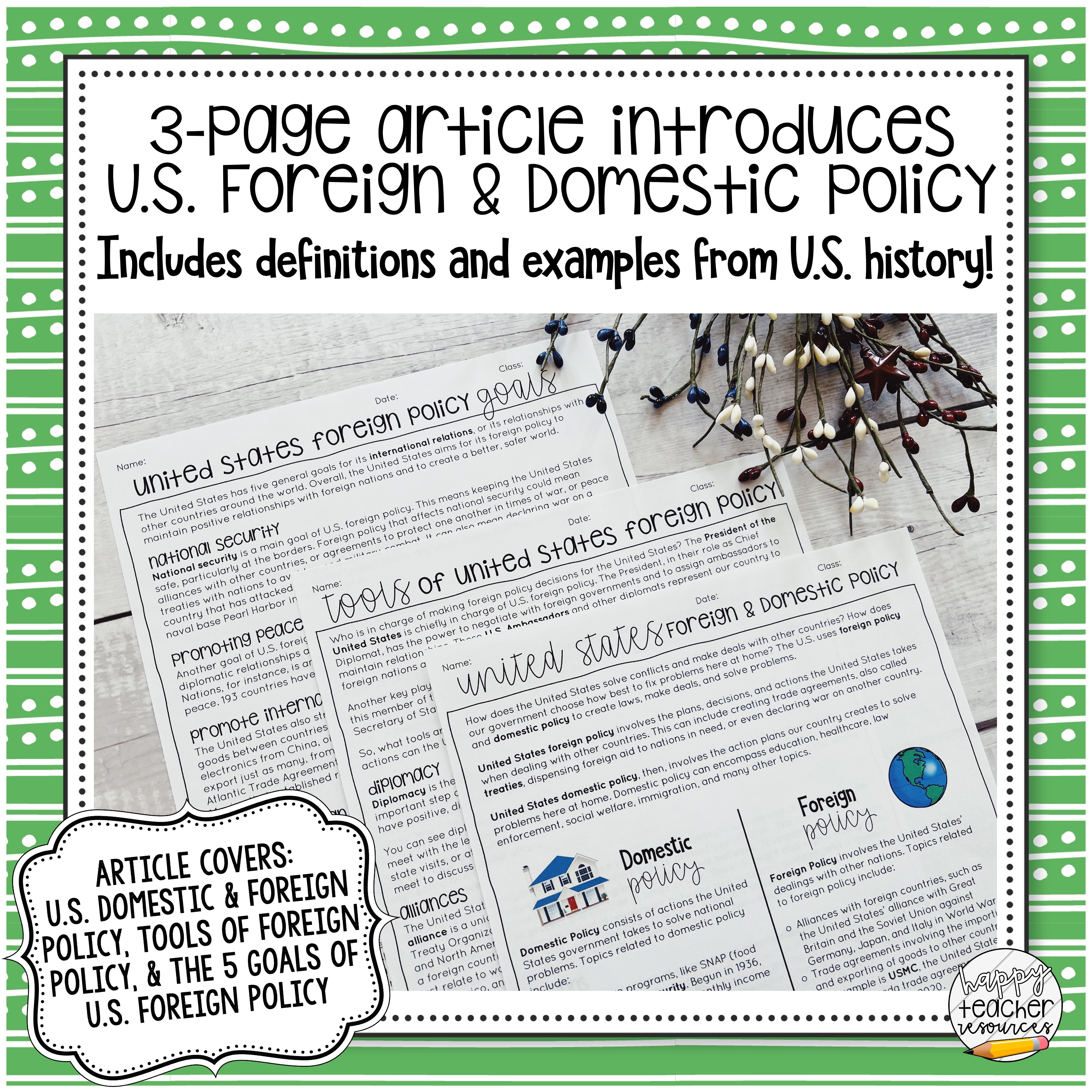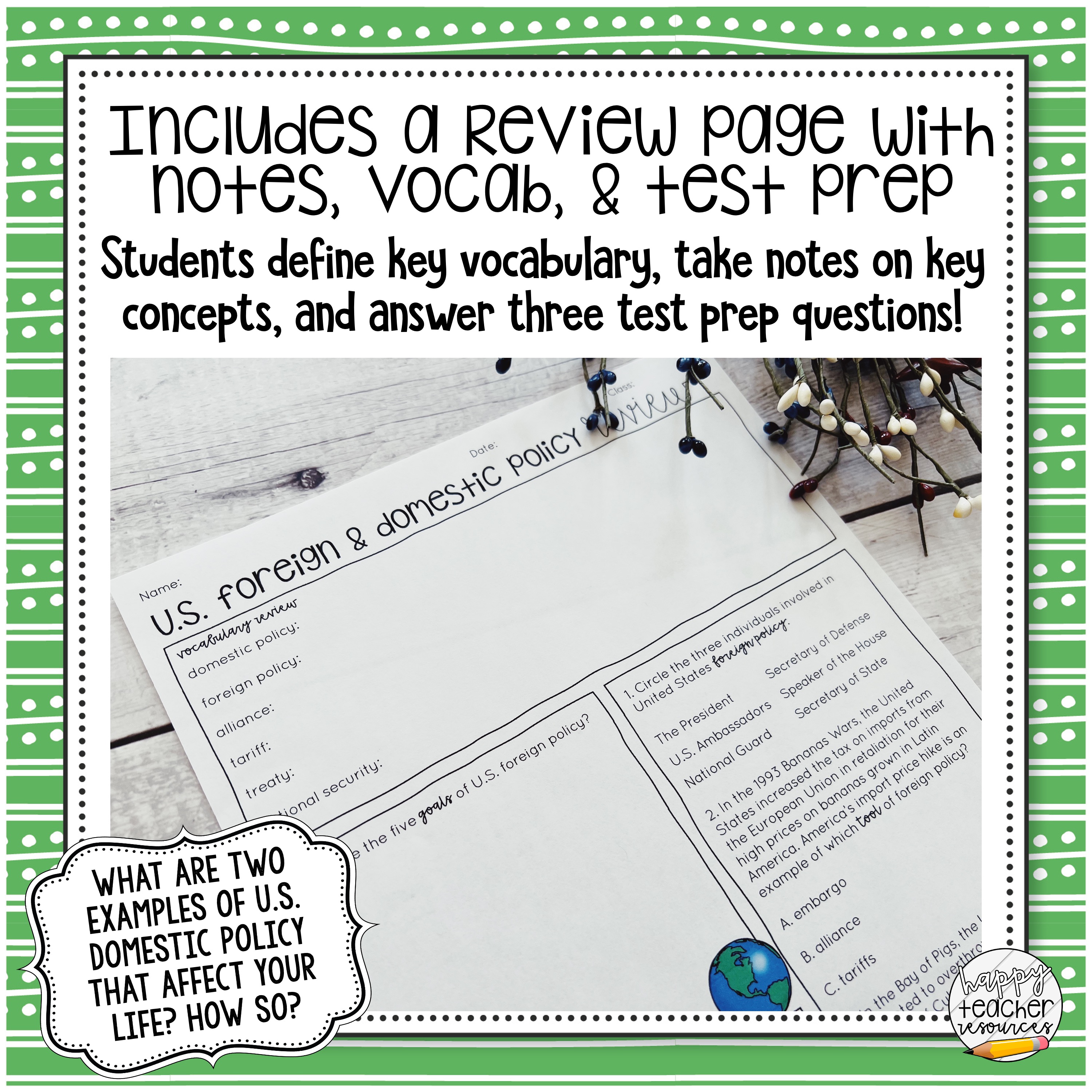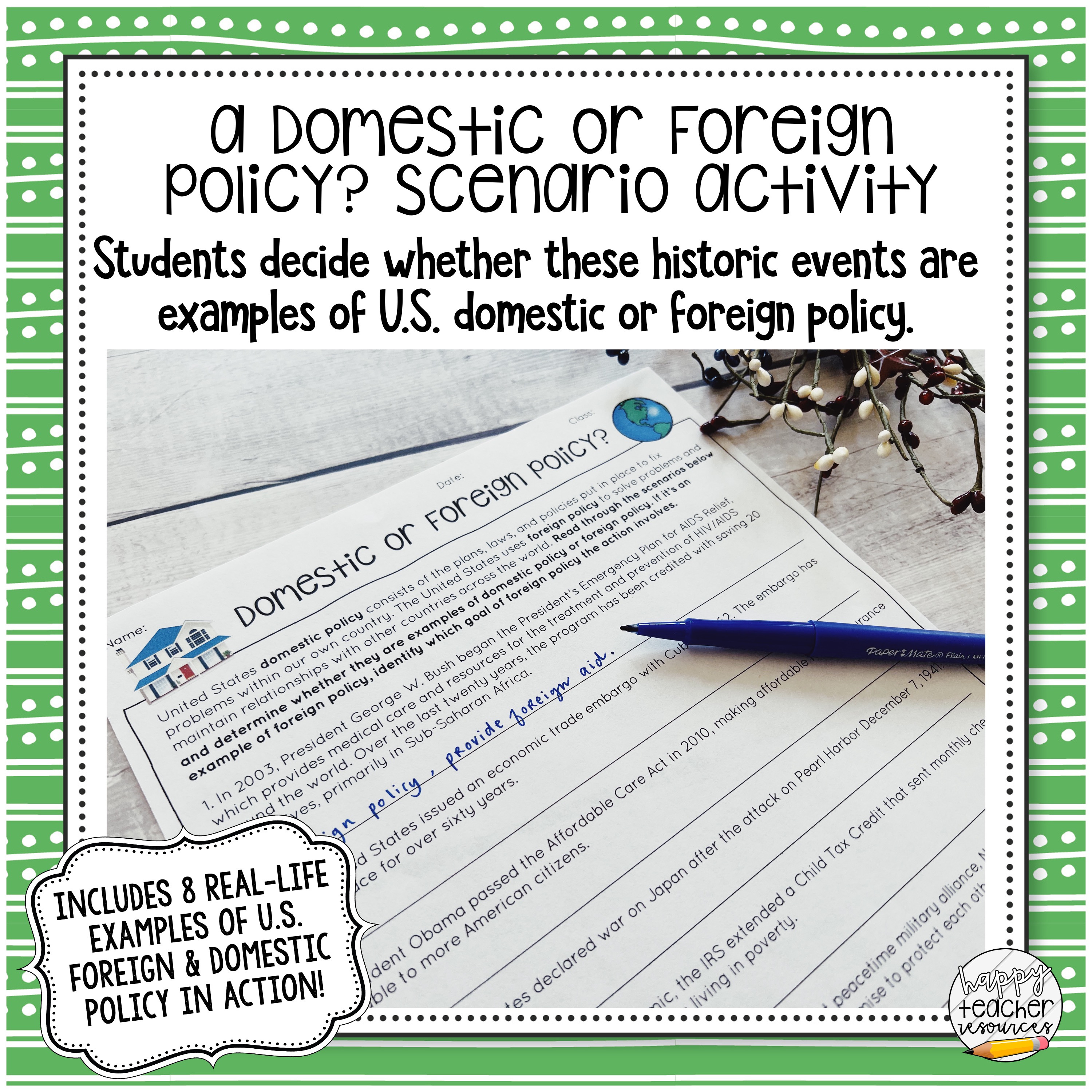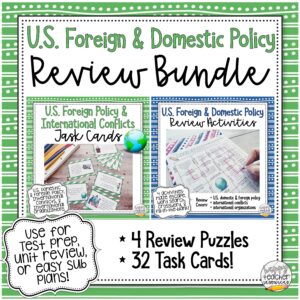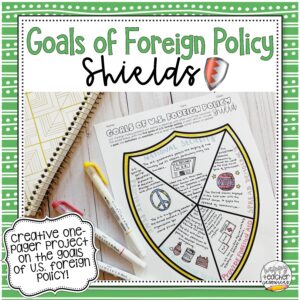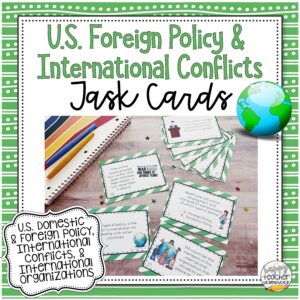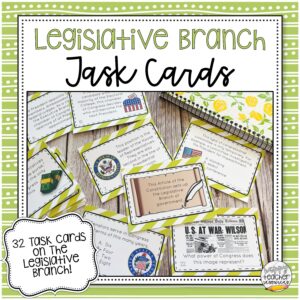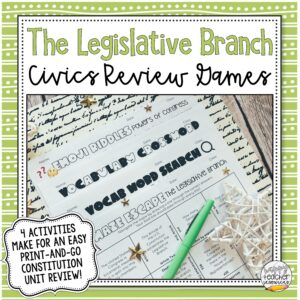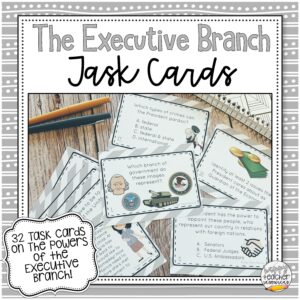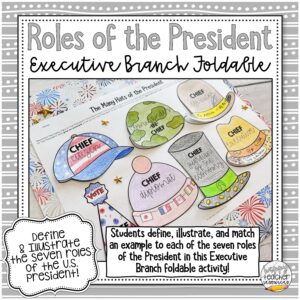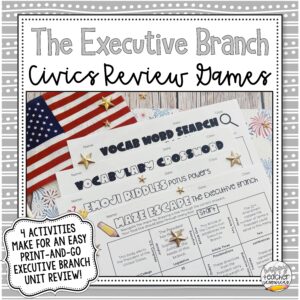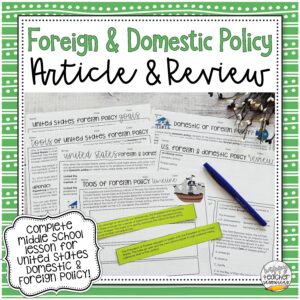This United States Foreign & Domestic Policy Article & Review for Civics includes a three-page reading passage introducing United States foreign and domestic policy, as well as the tools and goals of U.S. foreign policy. Key concepts like foreign & domestic policy, sanctions, tariffs, embargos, treaties, alliances, and the five goals of U.S. foreign policy are covered. Three review activities are included: a review page with vocabulary and questions related to the text, a Foreign or Domestic policy? scenario activity, where students read through historic scenarios and determine whether they’re examples of U.S. foreign or domestic policy, and a tools of foreign policy timeline activity. Perfect for middle or high school students studying United States foreign policy in their Civics, American History, or American government classrooms!
Aligned to the 2022 Florida State Standard for Middle School Civics:
- SS.7.CG.4.1 Explain the relationship between U.S. foreign and domestic policy.
This resource includes:
✯ The 3-page United States Foreign and Domestic Policy Article. This article introduces U.S. foreign and domestic policy, the key actors in foreign policy, and the main tools and five goals of U.S. foreign policy.
The tools of U.S. foreign policy covered:
- diplomacy
- alliances
- treaties
- sanctions
- tariffs
- embargos
- military action
The goals of U.S. foreign policy included:
- national security
- promoting world peace
- providing foreign aid
- promoting the spread of democracy
- promoting international trade
✯ A Vocabulary and Test-Prep Review. Students define key vocabulary, take notes on key concepts, and answer three test prep questions.
The vocabulary included in the review: domestic policy, foreign policy, alliance, tariff, treaty, national security
Sample questions:
- What are the five goals of U.S. foreign policy?
- What are two examples of U.S. domestic policy that affect your life? How so?
- In the Bay of Pigs, the United States attempted to overthrow the communist dictator of Cuba, Fidel Castro. This action relates to which goal of U.S. foreign policy?
✯ A Domestic or Foreign Policy? Scenario Activity. Students are given eight real-life examples of historic policies in United States history and determine whether these are examples of Domestic or Foreign Policy. If it’s an example of foreign policy, students are asked to identify which goal of foreign policy the action involves.
Scenarios include:
- President Obama passed the Affordable Care Act in 2010, making affordable health insurance available to more American citizens. (Domestic Policy)
- April 4, 1949, the United States joined its first peacetime military alliance, NATO. The 31 countries that have signed this treaty to date promise to protect each other in times of war. (Foreign Policy, Promoting Peace)
✯ A Tools of Foreign Policy Timeline. This is a fun activity! The United States is in a conflict with a fictitious country named Pirasea that is attacking U.S. naval ships. Students are given five events and, using what they know of the tools of U.S. foreign policy, put the timeline in sequential order. Remember, diplomacy is always the first step of U.S. foreign policy! Students watch as tensions escalate between the U.S. and Pirasea and get a sense of how the tools of foreign policy work in real life to navigate conflicts with other countries.
Two reflection questions end the activity:
- Why is diplomacy always the first step in United States foreign policy?
- Identify how declaring war might endanger one of the goals of United States foreign policy. Explain your reasoning. (For example, national security, or promoting peace.)
This resource comes as a non-editable PDF and includes an Answer Key. It is also available as a digital TPT Easel activity!
The digital TPT Easel versions can be assigned directly through Google Classroom, or you can generate a link that can be shared with your students over email or through your school’s LMS!
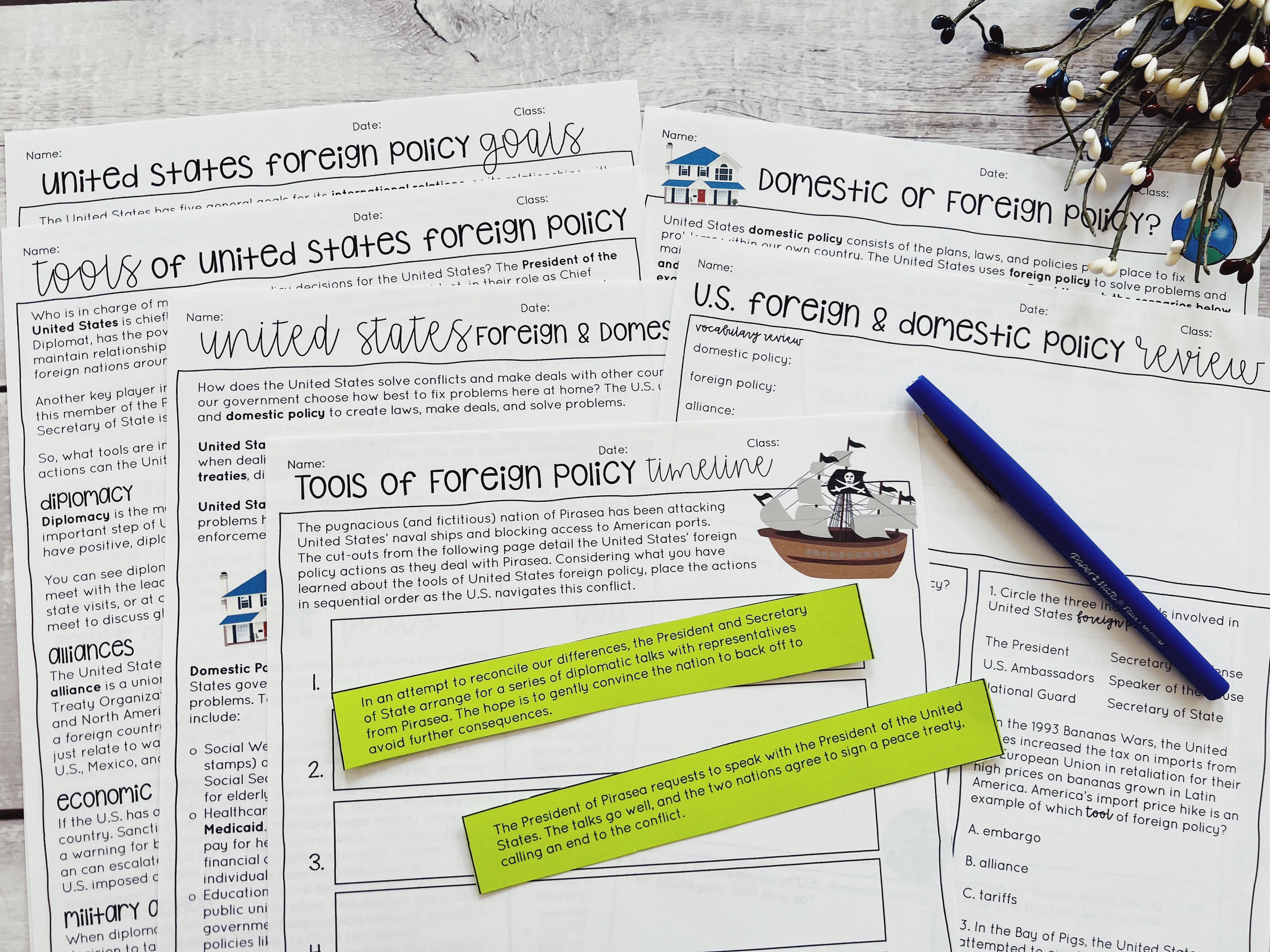
More Happy Teacher Products You Might Enjoy:
✩ U.S. Domestic & Foreign Policy Review BUNDLE for Civics & American Government
✩ Goals of U.S. Foreign Policy Creative One-Pager Project for Civics
✩ Civics Task Cards: United States Foreign Policy & International Conflicts
Become a happy teacher — join the email list!
Never miss a new product or a sale by signing up for an email subscription! I send periodic emails recapping new products, updates, and upcoming sales. Plus, you’ll get a free week of Civics Bell Ringers just for signing up!
Enter your email below to get started.
You can also follow Happy Teacher Resources on social media: Instagram | Facebook | Pinterest


